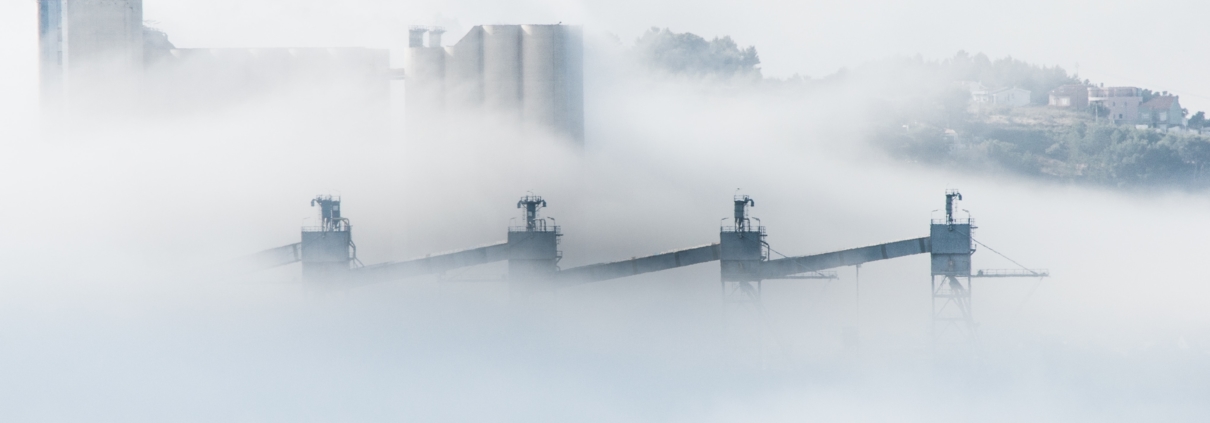The connection between the different air pollutants
When it comes to the subject of air pollution, not many people realize that the different air pollutants are very much interconnected. Reactions between various compounds under the right circumstances will form different pollutants, thus exacerbating air pollution.
Ammonia (NH3)
Ammonia is capable of forming secondary particulate matter (PM2.5) by reacting with sulfuric acids (H2SO4) and atmospheric nitric acids (HNO3) to form particulate ammonium sulfate ((NH4)2SO4) ammonium nitrate (NH4NO3). This occurs through a process called nucleation, where the gaseous molecules of ammonia condense to form either liquid or solid particles suspended in the atmosphere. There are two types of nucleation: Heterogeneous nucleation is where newly-formed molecules combine with existing ones to create larger particles, while homogeneous nucleation is where newly-formed molecules combine with each other to form entirely new particles.
Sulfur dioxide (SO2)
Sulfur dioxide can produce acid rain. It reacts with water, oxygen, and other substances to form airborne sulfuric acid (H2SO4), which then spreads across the atmosphere and falls down to earth in the form of rain, snow, sleet, hail, or fog.
Sulfur dioxide is also a precursor to secondary particulate matter. The gas undergoes homogeneous nucleation by first oxidizing into sulfuric acid. H2SO4 can then undergo binary nucleation with water vapour or ternary nucleation with water vapour and ammonia to form particulate droplets of sulfate.
Nitrogen oxides (NOx)
Nitrogen oxides, the term for compounds consisting of nitrogen and oxygen including nitrogen monoxide (NO) and nitrogen dioxide (NO2), can produce acid rain. Similar to SO2, these compounds react with water, oxygen, and other substances to form airborne nitric acids (HNO3), which combine with precipitation to form acid rain.
In ambient conditions, nitrogen monoxide rapidly oxidizes with other components to form nitrogen dioxide. Nitrogen dioxide is also a precursor to ground-level ozone (O3). Ozone is a secondary pollutant – that means it is typically not directly emitted from emission sources. NO2 molecules absorb energy in the presence of heat and light, causing their physical and chemical properties to change and react with other existing air pollutants, forming ozone as a result. This process is called a photochemical reaction.
Nitrogen oxides are capable of forming secondary particulate matter as well. The gases go through a chemical process known as nucleation by condensing into liquid or solid particles suspended in the atmosphere. NOx oxidizes to become nitric acid (HNO3) and reacts with either NH3 to form particulate ammonium nitrate (NH4NO3) or with sodium chloride (NaCl) to form particulate sodium nitrate (NaNO3).
Volatile organic compounds (VOC)
Volatile organic compounds are a precursor to ground-level ozone. By absorbing heat and light, they undergo what’s called a photochemical reaction with existing air pollutants to form ozone.
Volatile organic compounds are also capable of forming secondary particulate matter. The compounds oxidize in the atmosphere to create secondary organic aerosols (SOAs), which in turn contribute to the existence of organic carbon (CO) in PM2.5.
Are you interested in learning more about air quality and air pollution? Check our our Air Quality Academy for more information on the different air pollutants, their relationships, associated impacts and on what can be done to curb air pollution.


 Unsplash.com / sporlab
Unsplash.com / sporlab unsplash.com / FilterGrade
unsplash.com / FilterGrade